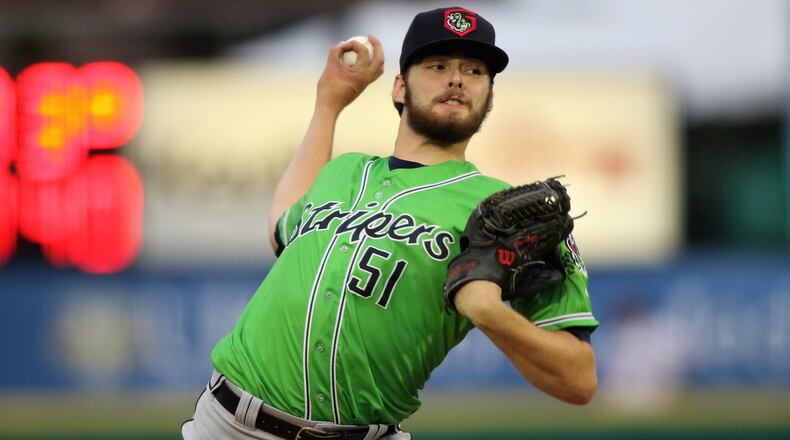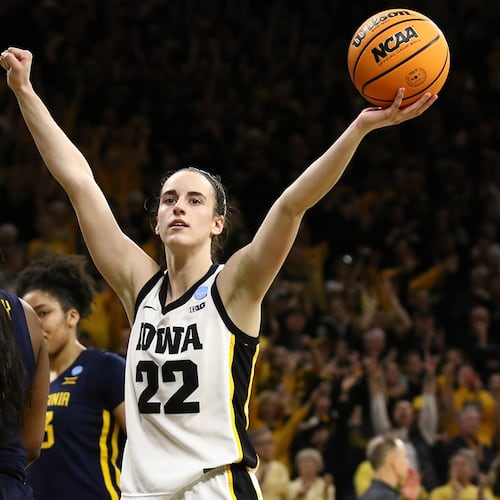Nobody’s sure there’ll be a major-league season. Everyone assumes there won’t be a minor-league season, though no official announcement has been made.
Here’s J.J. Cooper, executive editor of the authoritative Baseball America: “There are three things we know. One, the current plan at the major-league level has a taxi squad, which essentially is saying, ‘We’re not playing minor-league baseball.’ Two, minor-league operators across the board are adamant: ‘If we don’t play (before) fans, we’re not playing the games. It doesn’t make sense for us. Why would we carry these expenses with no revenue?’ And three, every issue major-league baseball has as far as different jurisdictions is true at the minor-league level – but more complicated because they’re in more states. If the Pacific Coast League, which is in seven states, has three states where it’s OK to play games and four where it’s not, what do you do?”
Cooper again: “I haven’t talked to any MiLB (minor-league) operator over the last few weeks who realistically expects to have a season.”
The Braves have six minor-league affiliates, two based in Georgia – Triple-A Gwinnett and Low-A Rome. Six times 25 gives us 150 players, nearly all of whom are in the developmental stages of their baseball lives. Do such prospects really need to skip a year? Answer: no way. But what to do if the minors don’t play in 2020?
Cooper: “That’s the million-dollar question. Everybody talks about the need of figuring out a way for those players to get at-bats and games. No one wants it to be a lost season – especially for pitchers. No one wants pitchers to throw some bullpens this year on their own and then try to ramp back up next year. (But) no one knows what that means yet. There’s talk about a super-Arizona– whether that’s massive instructs (instructional leagues) or a much-expanded Arizona fall league – or getting team players together at some point in the complexes.”
Back to taxi squads. The belief is that, if/when the 2020 season starts, major-league rosters will be expanded to 50, or twice the normal size. Half that number will be on a practice squad. Cooper’s guess is that those 25 will break into two groups – players who can be summoned to the majors for immediate help and high-end prospects in whom the club has the most invested.
“Obviously you’re going to want your close-to-the-majors top prospects there to make sure they get at-bats and innings,” Cooper said. “It’s not hard to guess that Ian Anderson and Cristian Pache and Drew Waters are going to be there. It’s not hard to say that (Braden) Shewmake and the college guys they went for last season (in the draft) will be there. But how much are they going to balance having guys who are ready to step in and getting top prospects exposure to help their development?”
In other seasons, the second 25 would be scattered among the affiliates. Cooper expects no scattering in our time of pandemic. He anticipates the taxi squad will remain with the 25-man big-league roster. (You’ll recall that Julio Teheran was dispatched to Florida to say sharp after he was omitted from the National League Division Series roster last year. He was summoned after Chris Martin was injured in Game 1. If that were to happen this year, such a player might have to undergo a 14-day quarantine, which would defeat the purpose of “staying sharp.”)
“Having one (quarantine) bubble is going to be easier than having two,” Cooper said. “Let’s say the Cardinals are playing the Braves, a four-game series. The Cardinals would bring their 50 players; the Braves would have their 50 there. Think of it like an instructs game: Maybe at noon that day, (taxi squads) play five innings – just to give them at-bats and innings. They’re seeing live pitching; they’re stretched out.”
Then: “Do you want have two places where you’re doing testing? Do you want to have two hotels where you’re getting food shipped in? It just makes it easier to have it all together.”
We pause to note the obvious: Nobody on the periphery, and maybe nobody on the inside, knows exactly what will happen with baseball. MLB and its players must decide about playing before anything else gets addressed. The scenario described above might or might not approximate reality.
Beyond taxi squads, what might occur? Do the Braves assemble 100 or so non-taxi players somewhere and keep them in place all summer for a few months? Such a gathering would surely mean testing and quarantine, which wouldn’t come cheap.
Cooper: “MLB teams are making every effort to cut costs. In some cases, there are minor-league coaches being furloughed. They could bring them back, (or) you could do instructs with less coaches. One question is, are MLB teams willing to bear the expense of bringing these players to the complexes to play intersquad games or whatever? Second part is, can they develop structures for that to be safe? It’s one thing to say we’re going to do these things at the MLB level, but minor-league players do not have a union negotiating for them. If MLB and the MLBPA are working out best practices from a health-and-safety standpoint for MLB players, it’d be logical to expect similar practices at the minor-league level.”
This uncertainty comes at a particularly anxious moment for minor-league baseball. MLB already has proposed cutting 42 of the existing 160 affiliates. Most minor-league players don’t have million-dollar contracts, meaning any money they miss will be felt. Minor-league owners bank next to nothing in TV money. Then there’s the great unknowable: What happens to a 19-year-old ballplayer who doesn’t get a competitive at-bat over a full year? Is his professional growth stunted?
Not that any of us, as we speak, are in a great place, but baseball has – pun warning – major issues. Its players and owners are again squabbling over money. Even if the 2020 season begins, there's no guarantee players/managers/staff will stay healthy. With the collective bargaining agreement set to lapse after the 2021 season, the notion of a strike/lockout looms over 2022. The 2020 draft has been shortened from 40 rounds to five. The 2020 minor-league season almost certainly won't happen.
Oh, and the Astros cheated. Other than that, everything's peachy.
About the Author
The Latest
Featured



